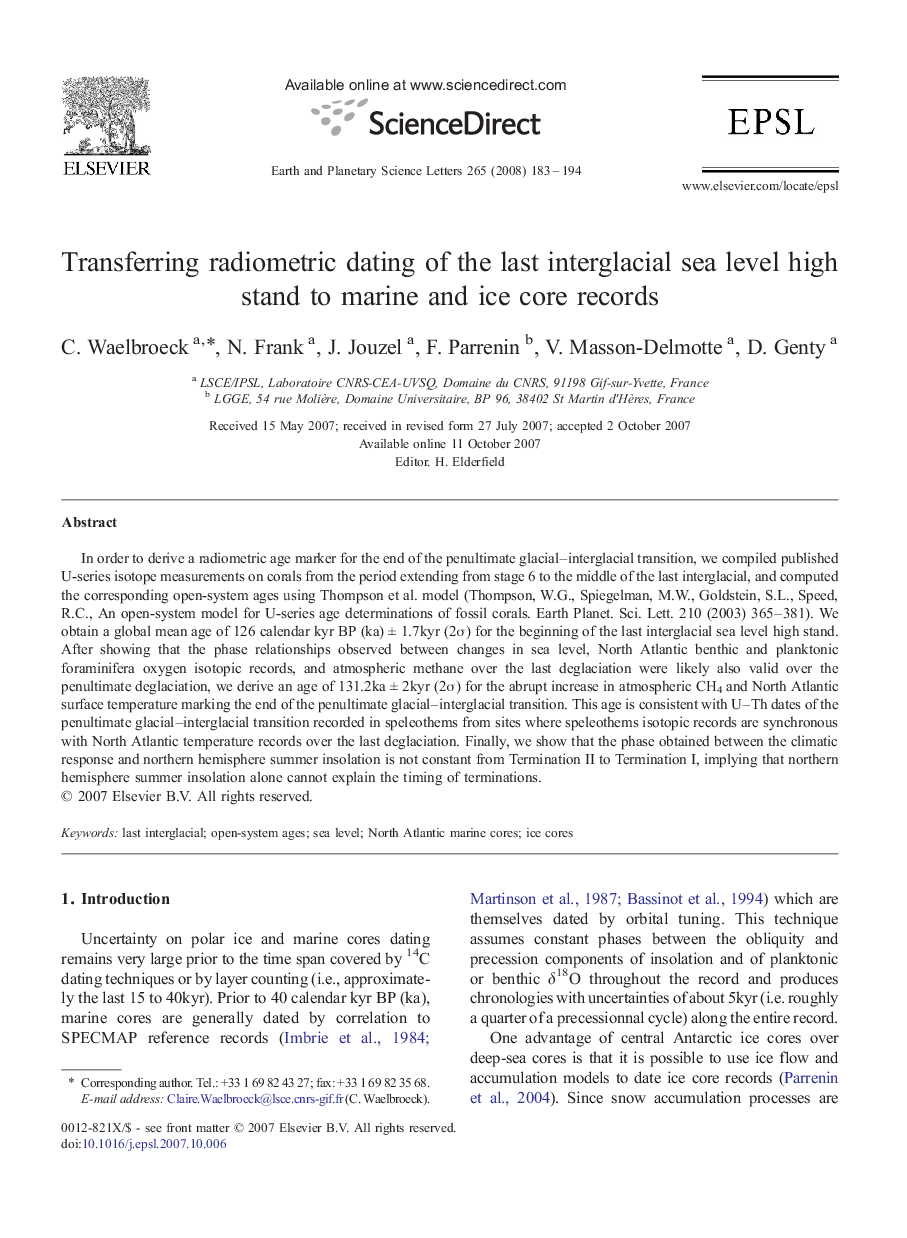| Article ID | Journal | Published Year | Pages | File Type |
|---|---|---|---|---|
| 4680195 | Earth and Planetary Science Letters | 2008 | 12 Pages |
In order to derive a radiometric age marker for the end of the penultimate glacial–interglacial transition, we compiled published U-series isotope measurements on corals from the period extending from stage 6 to the middle of the last interglacial, and computed the corresponding open-system ages using Thompson et al. model (Thompson, W.G., Spiegelman, M.W., Goldstein, S.L., Speed, R.C., An open-system model for U-series age determinations of fossil corals. Earth Planet. Sci. Lett. 210 (2003) 365–381). We obtain a global mean age of 126 calendar kyr BP (ka) ± 1.7kyr (2σ) for the beginning of the last interglacial sea level high stand. After showing that the phase relationships observed between changes in sea level, North Atlantic benthic and planktonic foraminifera oxygen isotopic records, and atmospheric methane over the last deglaciation were likely also valid over the penultimate deglaciation, we derive an age of 131.2ka ± 2kyr (2σ) for the abrupt increase in atmospheric CH4 and North Atlantic surface temperature marking the end of the penultimate glacial–interglacial transition. This age is consistent with U–Th dates of the penultimate glacial–interglacial transition recorded in speleothems from sites where speleothems isotopic records are synchronous with North Atlantic temperature records over the last deglaciation. Finally, we show that the phase obtained between the climatic response and northern hemisphere summer insolation is not constant from Termination II to Termination I, implying that northern hemisphere summer insolation alone cannot explain the timing of terminations.
